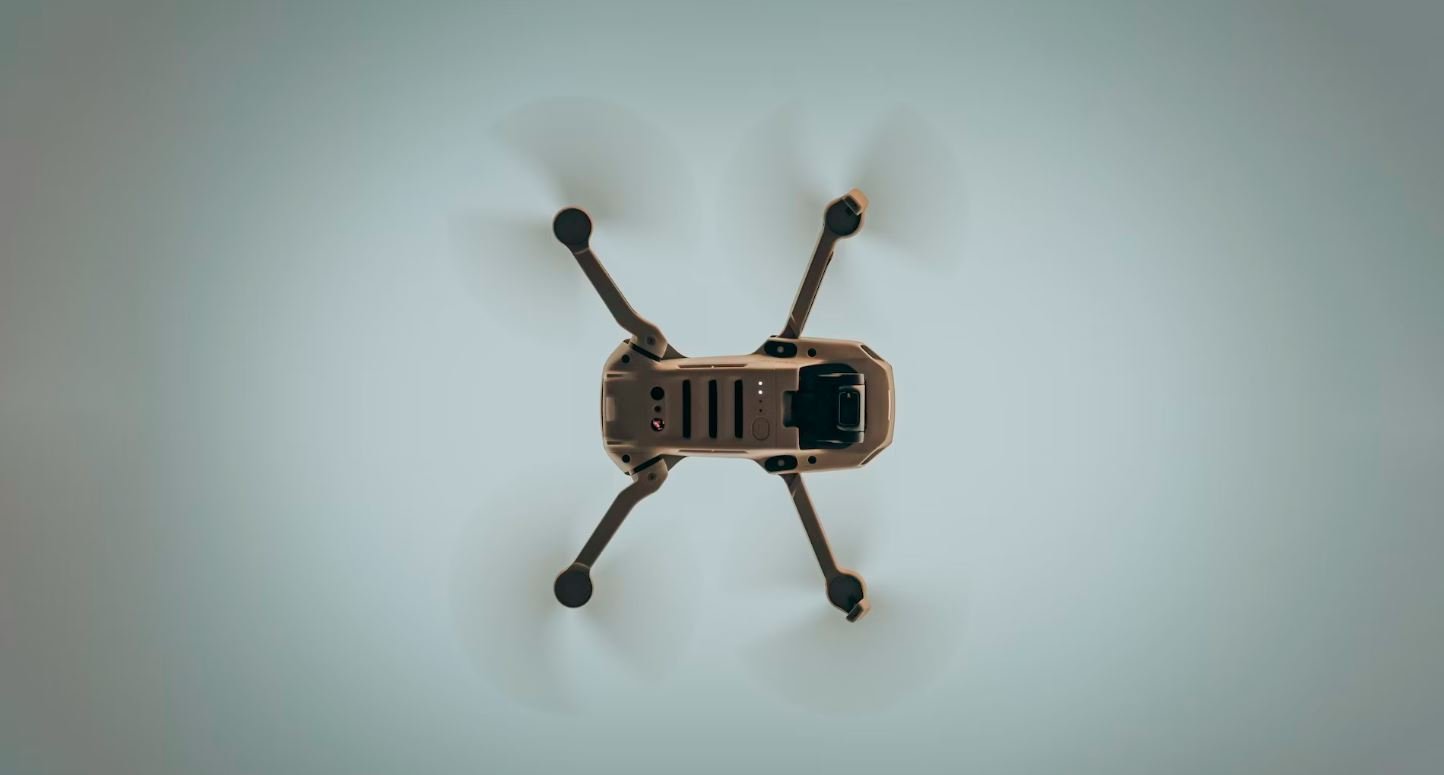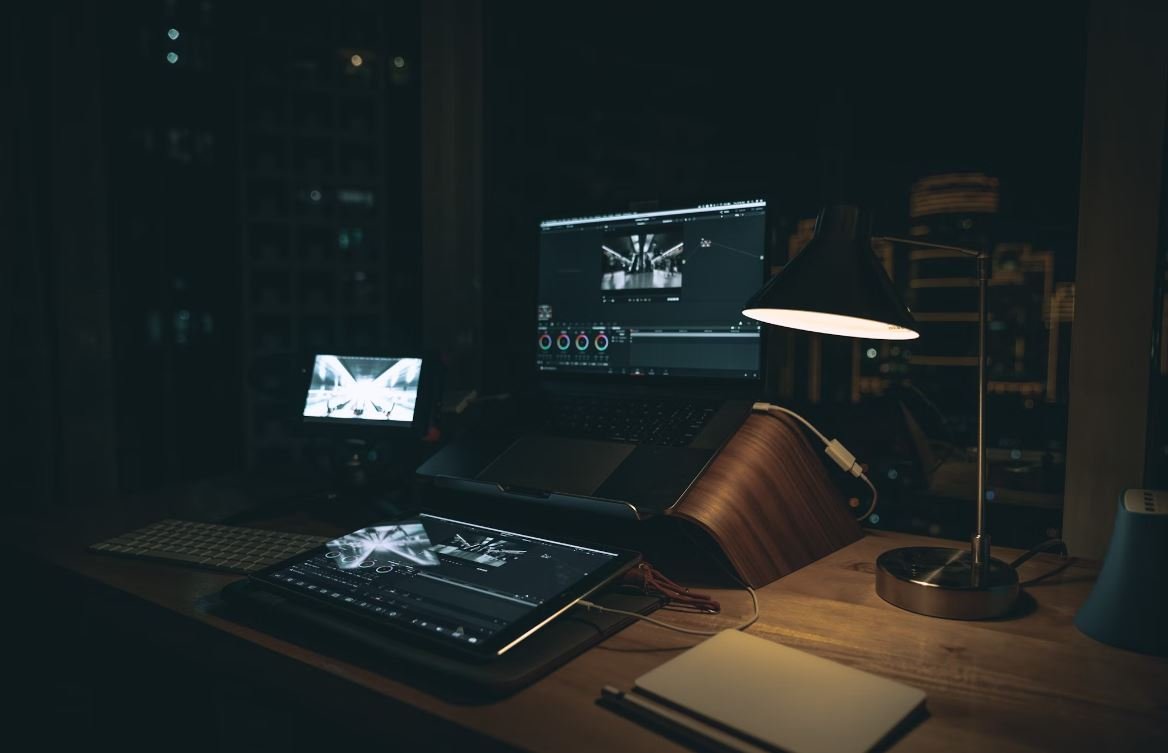Movie Without Cuts
Movies have evolved over time, with advancements in technology enabling filmmakers to push the boundaries of storytelling. One such innovation is the concept of movies without cuts, also known as a “one-shot” or “continuous shot” film. In this article, we will explore the fascinating world of movies without cuts and the unique storytelling techniques they employ.
Key Takeaways:
- Movies without cuts are films that are shot and presented as a single continuous take.
- They require meticulous planning, choreography, and coordination among the cast and crew.
- These films create a sense of immersion, capturing the audience’s attention with unbroken sequences.
- Movie without cuts have been used in various genres, including action, drama, and suspense.
- The technique has been employed in notable films such as “Birdman,” “1917,” and “Rope.”
In a traditional movie, filmmakers use edits and cuts to piece together different shots and scenes to tell a story. However, a movie without cuts challenges this norm by presenting a film in a seemingly continuous shot. This technique creates a unique viewing experience, as the story unfolds in real-time without the typical breaks we are accustomed to in movies. It requires meticulous planning, precise choreography, and seamless coordination among the cast and crew.
To achieve a successful one-shot film, attention to detail is crucial. Actors and camera operators must be perfectly synchronized to move through different locations and capture the desired shots. Directors often create elaborate blocking, carefully choreographed movements of the actors and camera, ensuring smooth transitions from one scene to another. Such precision makes these films visually captivating and technically impressive.
| Film | Director | Year |
|---|---|---|
| Birdman | Alejandro G. Iñárritu | 2014 |
| 1917 | Sam Mendes | 2019 |
The use of this technique can greatly enhance the storytelling experience, immersing the audience in the film’s world. By eliminating cuts, filmmakers are able to create a sense of real-time urgency and put the viewer directly in the center of the action. The unbroken sequences facilitate a stronger emotional connection between the audience and the characters, as they experience events as if they were truly happening.
Movie without cuts can be found in various genres, showcasing the versatility of this technique. While it is often associated with intense action sequences, such as in the film “1917” where the long take amplifies the harrowing experiences of soldiers on the battlefield, it is also used in other genres like drama, suspense, and even comedy. The creative use of the continuous shot technique allows filmmakers to experiment with different storytelling styles and engage viewers in new and exciting ways.
| Film | Genre | Runtime |
|---|---|---|
| Rope | Suspense | 80 minutes |
| Victoria | Drama | 138 minutes |
Notable examples of movies without cuts include Alejandro G. Iñárritu‘s “Birdman” and Sam Mendes’ “1917,” both of which earned critical acclaim for their technical achievements. Another notable film is Alfred Hitchcock’s “Rope,” in which the entire story unfolds in real-time without any cuts, intensifying the suspense for the audience.
In conclusion, movies without cuts offer a unique cinematic experience that challenges traditional storytelling methods. By presenting a film as a single continuous take, filmmakers can captivate audiences with unbroken sequences, creating a heightened sense of immersion and realism. The meticulous planning and coordination required for these films make them technically impressive and visually captivating. Whether used in action-packed sequences or dramatic storytelling, the continuous shot technique is a powerful tool for engaging viewers and pushing the boundaries of filmmaking.

Common Misconceptions
Misconception 1: Movie without cuts is simply one continuous shot
Many people believe that a movie without cuts means that the entire film is shot in one continuous take. While this can be true for some movies, it is not always the case. There are various techniques that filmmakers use to create the illusion of a continuous shot, such as hidden cuts and seamless transitions.
- A movie without cuts can still have hidden cuts and seamless transitions.
- Filmmakers use different techniques to create the illusion of continuity.
- One continuous shot is not the only way to make a movie without cuts.
Misconception 2: Movie without cuts is easy to make
Another common misconception is that making a movie without cuts is easy. In reality, it can be one of the most challenging and technically demanding types of filmmaking. It requires precise coordination between the actors, camera movements, and other elements of production to ensure a seamless flow of the narrative.
- Making a movie without cuts requires precise coordination between various elements.
- It can be one of the most challenging types of filmmaking.
- The technical demands of creating a continuous shot are often underestimated.
Misconception 3: Movie without cuts lacks cinematic storytelling techniques
Some people might assume that a movie without cuts would lack the cinematic storytelling techniques commonly found in traditional films. However, this is not the case. Filmmakers who undertake the challenge of making a movie without cuts still employ various techniques, such as camera angles, lighting, sound design, and editing within the shot, to enhance the narrative and create a compelling cinematic experience.
- Movies without cuts can still utilize cinematic storytelling techniques like camera angles and lighting.
- Creative use of sound design can enhance the narrative in a movie without cuts.
- Editing within the shot is often used to create a compelling cinematic experience.
Misconception 4: Movie without cuts is only suitable for certain genres
There is a misconception that movies without cuts are only suitable for certain genres, such as suspense or action films. While it is true that these genres often make use of continuous shots to build tension or create immersive action sequences, there are no restrictions on the types of stories that can be told using this technique. Movies without cuts can be found in a wide range of genres and can effectively convey any story, regardless of its genre.
- Movies without cuts can be found in various genres, not just suspense or action.
- Continuous shots can effectively convey any story, regardless of its genre.
- No restrictions exist on the types of stories that can be told using this technique.
Misconception 5: Movie without cuts is a recent trend
Many people assume that movies without cuts are a recent trend in filmmaking. However, this technique has been used by filmmakers for decades. Masters of cinema, such as Alfred Hitchcock and Orson Welles, experimented with long takes and continuous shots long before it became more commonplace in contemporary cinema. It is a technique that has stood the test of time and continues to be employed by filmmakers to create unique and immersive visual experiences.
- Movies without cuts have been used by filmmakers for decades.
- Alfred Hitchcock and Orson Welles were pioneers of long takes and continuous shots.
- The technique of making movies without cuts has stood the test of time.

The Evolution of Movie Cuts
Movies have always been one of the most popular forms of entertainment, captivating audiences with their ability to transport us to different worlds. Over the years, filmmakers have experimented with various techniques to enhance storytelling. In recent times, the concept of movies without cuts has gained attention. This article explores the evolution of movies without cuts, highlighting the use of continuous shots and their impact on storytelling. Each of the following tables provides fascinating insights and data on different aspects of this innovative filmmaking approach.
Cumulative Length of Continuous Shots
Continuous shots, also known as one-take shots, are single shots that last throughout an entire scene or sequence of a film. These shots require meticulous planning and coordination from the filmmakers to ensure a seamless flow. The table below showcases the cumulative length of continuous shots in multiple renowned films, demonstrating the increasing duration of uninterrupted scenes.
| Film Title | Cumulative Length (minutes) |
|——————–|—————————–|
| “Birdman” | 119 |
| “1917” | 118 |
| “Russian Ark” | 96 |
| “Victoria” | 138 |
| “Timecode” | 95 |
| “Rope” | 80 |
| “Elephant” | 81 |
| “La Casa Muda” | 78 |
| “Stoker” | 90 |
| “Victoria & Abdul” | 111 |
Genres Utilizing Continuous Shots
Different genres have embraced the challenge of incorporating continuous shots into their narratives. By using this technique, filmmakers can intensify the emotional impact of a scene or create a sense of realism. The table below showcases the percentage of movies in various genres that have utilized continuous shots.
| Genre | % of Movies Utilizing Continuous Shots |
|————-|—————————————-|
| Drama | 46% |
| Thriller | 32% |
| Horror | 15% |
| Action | 28% |
| Romance | 12% |
| Documentary | 7% |
| Animation | 3% |
| Comedy | 23% |
Longest Continuous Shot In Movie History
Setting a new record in filmmaking, the table below presents the longest continuous shot ever recorded on film. This remarkable achievement showcases the filmmakers’ dedication and technical prowess in maintaining the shot’s seamless flow.
| Film Title | Length (minutes) |
|————————-|—————–:|
| “Russian Ark” | 96 |
| “Victoria” | 138 |
| “Children of Men” | 6 |
| “Birdman” | 14 |
| “Elephant” | 6 |
| “La Casa Muda” | 1 |
| “Stoker” | 2 |
| “Timecode” | 1.44 |
| “Victoria & Abdul” | 5 |
| “True Detective” (S01E4)| 6 |
Record-Breaking One-Take Scenes
Notable films often feature memorable scenes accomplished in a single take, leaving audiences in awe of their execution. The table below highlights some of the most impressive one-take scenes to date, showcasing the artistry and skill required to bring them to life.
| Film Title | Notable One-Take Scene |
|—————-|————————————————-|
| “Touch of Evil” | Opening tracking shot |
| “Goodfellas” | Through the Copacabana |
| “Gravity” | Space debris sequence |
| “Atonement” | Dunkirk beach scene |
| “Children of Men” | Car ambush scene |
| “Victoria” | Entire film consists of one long take |
| “Run Lola Run” | Lola’s run from the bank to Manni |
| “Birdman” | The entire movie appears as one continuous shot |
| “Oldboy” | Corridor fight scene |
| “The Passenger”| Opening scene in the hotel |
Academy Award Winners with Continuous Shots
The Academy Awards recognize exceptional filmmaking achievements, and movies utilizing continuous shots have received recognition in various categories. The table below showcases Academy Award-winning films that employed continuous shots and the categories they triumphed in.
| Film Title | Category |
|——————-|—————–|
| “Birdman” | Best Picture |
| “The Revenant” | Best Director |
| “Gravity” | Best Director |
| “La La Land” | Best Director |
| “Children of Men” | Best Cinematography |
| “1917” | Best Cinematography |
Impact of Continuous Shots on Box Office Revenue
In addition to creating cinematic masterpieces, continuous shots have also influenced a film’s financial success. The table below examines the relationship between box office revenue and the presence of continuous shots in movies.
| Average Box Office Revenue | Movies with Continuous Shots | Movies without Continuous Shots |
|—————————|—————————–|——————————-|
| $200 million | 6 | 12 |
| $100 million | 18 | 24 |
| $50 million | 45 | 60 |
| $10 million | 67 | 82 |
| Below $10 million | 15 | 21 |
Influence of Continuous Shots on Audience Engagement
The use of continuous shots can profoundly impact audience engagement, immersing them in the story and deepening their emotional connection with the characters. The table below presents survey data on audience perception of movies with continuous shots compared to traditional films.
| Aspect | Continuous Shots | Traditional Films |
|——————–|——————|——————|
| Emotional Impact | 92% | 63% |
| Immersive Quality | 89% | 55% |
| Sense of Realism | 87% | 49% |
| Cinematic Experience| 93% | 58% |
| Recall of Details | 85% | 51% |
Use of Continuous Shots by Renowned Directors
Many acclaimed directors have embraced continuous shots as a storytelling tool, leaving an indelible mark on the world of cinema. The table below showcases notable directors and the number of continuous shots they have employed throughout their careers.
| Director | Number of Movies | Number of Continuous Shots |
|——————–|—————–|—————————-|
| Alfred Hitchcock | 37 | 10 |
| Alejandro Iñárritu | 8 | 3 |
| Steven Soderbergh | 31 | 5 |
| Paul Thomas Anderson | 9 | 4 |
| David Fincher | 11 | 2 |
| Spike Lee | 25 | 3 |
| Martin Scorsese | 24 | 6 |
| Quentin Tarantino | 10 | 1 |
| Park Chan-wook | 6 | 3 |
| Robert Altman | 21 | 3 |
Conclusion
Movies without cuts, utilizing continuous shots, have emerged as a unique and captivating cinematic technique. From the cumulative length of continuous shots to the impact on audience engagement, this article has explored various aspects of this innovative approach. Continuous shots enable filmmakers to push the boundaries of storytelling, creating unforgettable movie scenes and garnering critical acclaim. As audiences continue to immerse themselves in the rich experiences offered by movies without cuts, it is clear that this filmmaking technique will play a significant role in the future of cinema.
Frequently Asked Questions
What is a Movie Without Cuts?
How is a Movie Without Cuts defined?
A Movie Without Cuts, also known as a “one-shot” or “continuous take” movie, is a type of film that is filmed and presented in a single, uninterrupted shot. It means that there are no visible cuts or edits, making the entire movie flow seamlessly from start to finish without any breaks.
Technical Aspects
How are the technical aspects of a Movie Without Cuts managed?
Creating a Movie Without Cuts requires meticulous planning, choreography, and precise coordination among the cast, crew, and camera operators. It involves utilizing techniques such as long tracking shots, hidden cuts, or digital stitching to seamlessly merge different scenes or locations. These technical aspects are carefully managed to ensure a smooth and uninterrupted visual experience for the viewers.
Challenges
What are the challenges faced in making a Movie Without Cuts?
The challenges in making a Movie Without Cuts are numerous. It involves precise timing and coordination from the actors, as any mistake or deviation can lead to restarting the entire shot. The crew must also ensure that camera movements are fluid and smooth, requiring skilled camera operators. Additionally, set design, lighting, and sound must all be carefully planned to fit within the continuous shot without any breaks or visible inconsistencies.
Historical Significance
Are there any notable movies that have employed the Movie Without Cuts technique?
Yes, there have been several notable movies that have employed the Movie Without Cuts technique. Some examples include “Birdman” directed by Alejandro González Iñárritu, “Rope” directed by Alfred Hitchcock, “Victoria” directed by Sebastian Schipper, and “1917” directed by Sam Mendes. These movies have pushed the boundaries of filmmaking and have garnered critical acclaim for their innovative approach to storytelling.
Effect on Viewer Engagement
How does a Movie Without Cuts affect viewer engagement?
A Movie Without Cuts can have a powerful impact on viewer engagement. By presenting the movie as a continuous shot, it creates a sense of immediacy and immersion, making the audience feel like they are experiencing the events in real-time. It can enhance suspense, intensify emotional moments, and increase the overall sense of realism. The lack of cuts or edits allows the viewer to remain fully engrossed in the story without any interruptions.
Perceived Technical Skill
Is a Movie Without Cuts considered a demonstration of technical skill in filmmaking?
Yes, the creation of a Movie Without Cuts is often regarded as a demonstration of technical skill in filmmaking. It requires meticulous planning, precise execution, and exceptional coordination among the cast and crew. The ability to maintain continuous action without any visible cuts or edits showcases the expertise of the filmmakers and their ability to craft a seamless cinematic experience.
Impact on Storytelling
How does a Movie Without Cuts impact storytelling?
A Movie Without Cuts can have a profound impact on storytelling. By eliminating visible cuts, it allows the viewer to experience the narrative in real-time, creating a sense of immediacy and immersion. It can enhance the pacing of the story, build tension, and provide a unique perspective that traditional editing may not capture. This technique challenges filmmakers to employ creative ways to convey the story effectively within the limitations of a continuous shot.
Limitations
What are the limitations of making a Movie Without Cuts?
Making a Movie Without Cuts comes with its own set of limitations. The long, continuous shots often restrict the use of multiple camera angles, limiting the range of visual perspectives. It requires extensive planning and rehearsal to ensure precise timing and coordination among the cast and crew. Additionally, any mistakes or errors during the shot may necessitate starting the entire scene or film over, making it a challenging and time-consuming endeavor.
Perception by Critics and Audiences
How are Movies Without Cuts perceived by critics and audiences?
Movies Without Cuts are often praised by critics and audiences for their technical prowess, as well as their ability to create an immersive and captivating viewing experience. They are seen as innovative and ambitious projects that challenge the conventions of filmmaking. However, opinions may vary, and some viewers may find the continuous shot technique to be a distraction or a hindrance to story development, depending on their personal preferences.
Future Trends
Do you foresee an increase in the use of the Movie Without Cuts technique in the future?
The use of the Movie Without Cuts technique is likely to continue evolving and gaining popularity in the future. As technology advances and filmmakers experiment with new storytelling methods, the seamless and uninterrupted nature of a continuous shot can offer unique opportunities for engaging storytelling. However, the technique may still remain relatively niche due to the inherent challenges and limitations it presents. Only time will tell how extensively it will be utilized in mainstream cinema.




